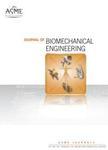版权所有:内蒙古大学图书馆 技术提供:维普资讯• 智图
内蒙古自治区呼和浩特市赛罕区大学西街235号 邮编: 010021

作者机构:Univ Calif Berkeley Dept Mech Engn Berkeley CA 94720 USA Univ Calif Berkeley Dept Math Berkeley CA 94720 USA Univ Penn Inst Med & Engn Dept Chem & Biomol Engn Philadelphia PA 19104 USA Univ Penn Perelman Sch Med Dept Radiol Philadelphia PA 19104 USA
出 版 物:《JOURNAL OF BIOMECHANICAL ENGINEERING-TRANSACTIONS OF THE ASME》 (生物机械工程学杂志;美国机械工程师学会汇刊)
年 卷 期:2019年第141卷第3期
页 面:031005-031005页
核心收录:
学科分类:0831[工学-生物医学工程(可授工学、理学、医学学位)] 0710[理学-生物学] 1001[医学-基础医学(可授医学、理学学位)] 10[医学]
基 金:NIH [R01HL103419] Siemens Healthineers
主 题:coronary artery stenosis fractional flow reserve hemodynamics image-based modeling noninvasive pressure drop
摘 要:The efficacy of reduced order modeling for transstenotic pressure drop in the coronary arteries is presented. Coronary artery disease is a leading cause of death worldwide and the computation of pressure drop in the coronary arteries has become a standard for evaluating the functional significance of a coronary stenosis. Comprehensive models typically employ three-dimensional (3D) computational fluid dynamics (CFD) to simulate coronary blood flow in order to compute transstenotic pressure drop at the arterial stenosis. In this study, we evaluate the capability of different hydrodynamic models to compute transstenotic pressure drop. Models range from algebraic formulae to one-dimensional (1D), two-dimensional (2D), and 3D time-dependent CFD simulations. Although several algebraic pressure-drop formulae have been proposed in the literature, these models were found to exhibit wide variation in predictions. Nonetheless, we demonstrate an algebraic formula that provides consistent predictions with 3D CFD results for various changes in stenosis severity, morphology, location, and flow rate. The accounting of viscous dissipation and flow separation were found to be significant contributions to accurate reduce order modeling of transstenotic coronary hemodynamics.